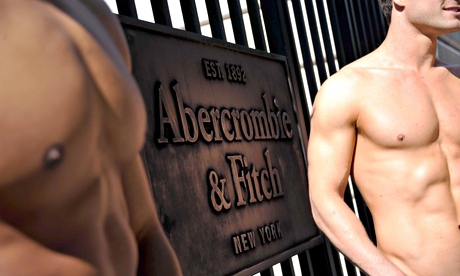
Abercrombie & Fitch (A&F) has set the marketing world astir again. Following a long period of poor performance, the brand is axing its heavily branded teen apparel in the US, to focus on fashion. Alas, it seems that the famously shallow brand is no longer a part of the cool club.
Recent commentary can be summarised in a single word – schadenfreude. How, commentators ask gleefully, can Abercrombie be getting it so delightfully wrong? And is this bizarre move a sign that the end is near?
Without wishing to end this glee prematurely, I think that A&F is suffering from three issues that every brand should be cautious of.
A shallow brand
A brand is so much more than the logo. Or at least it should be.
Selfridges’ No noise campaign elegantly demonstrated that strongly branded products remain distinctive, even without their logo. More to the point, without the logo, you still know exactly what the brands stand for.
Today’s brand literate consumers expect brands to stand for something. A&F stands for an image: the preppy, athletic, all-American teen with a whiff of sex appeal. There is no depth to the brand, no clear differentiator to its products beyond its logo.
A&F’s shallow branding was remarkably successful. In the words of The New Yorker, it created “an air of exclusivity that, in retrospect, seems preposterous for a company best known for selling rumpled flannels and T-shirts”. Yet when you remove the A&F logo from T-shirt, it becomes just an overpriced T-shirt.
A failure to move with the times
Brands are living entities that need to constantly evolve. A&F has barely updated its brand or products since the early 90s, meaning that what little it does stand for is no longer relevant.
Obviously, the world has changed in the past decade; the recession affected consumers’ spending behaviour, and the internet has forced brands to be more transparent and accountable. However, A&F hasn’t adapted its pricing or products or responded to changing consumer demands. Today, brands are judged not just by their image but by the way they behave, and A&F appears to have behaved spectacularly badly.
Teenagers themselves have also changed. They’ve always been a tough bunch to please – fickle, trend-driven, and lacking in brand loyalty. Being cool is now about establishing an individual identity, not being the same as everyone else. Technology and gadgets are also used to signal coolness, so clothing has to fight harder for teen money. And teenagers now have a powerful way to manage their unique identity that doesn’t cost a penny – social media.
The changing face of globalisation
As power within the global economy shifts, there are new opportunities and threats for brands.
American culture has been exported to the world for decades, but until recently it’s been a largely one-way street. Now it seems that the individualist European approach to fashion is beginning to permeate into American culture.
Two of A&F’s biggest competitors are European – Zara and H&M – although they also face domestic competition from Forever21. These “fast fashion” brands cater to teens’ rapidly changing tastes at a fraction of the A&F price tag.
However, A&F is benefiting from new global markets too. The brand continues to perform well in the Middle East and Asia, where the booming middle classes still demand branded goods as status symbols. It is likely that this fact lies behind A&F’s decision to continue to stock logo apparel in its international markets.
So, what does the future hold for A&F? I suspect that there will be more change to come. It’s highly unlikely that phasing out logo apparel is enough to change the brand’s fortunes. The issue isn’t that teens don’t like logo apparel; the issue is that the Abercrombie & Fitch brand is no longer relevant for a large chunk of its audience.
Nicola Carter is a senior planner at Rufus Leonard
Read more stories like this
• Has Coca-Cola’s Share a Coke campaign passed its sell-by date?
• Five brand logo redesigns that misfired and how to deal with the backlash
To get weekly news analysis, job alerts and event notifications direct to your inbox, sign up free for Media Network membership.
All Guardian Media Network content is editorially independent except for pieces labelled ‘Advertisement feature’. Find out more here.

